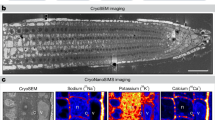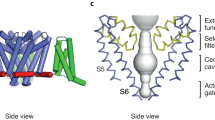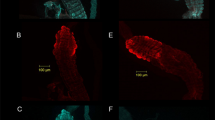Abstract
THE lizard Trachysaurus rugosus has been shown to tolerate very high plasma sodium concentrations, for example, 240 m. equiv./l., both in its natural habitat during summer and in the laboratory after the injection of sodium chloride solution1. The injected sodium chlorate reached osmotic equilibrium with the total body water but electrolyte changes inside the cells were not determined. The nucleated erythrocytes of Trachysaurus offered a useful starting point for intracellular studies in vivo. It has been shown in vitro that the sodium concentration in the nucleated erythrocytes of the turtle is actively maintained by respiration2.
This is a preview of subscription content, access via your institution
Access options
Subscribe to this journal
Receive 51 print issues and online access
$199.00 per year
only $3.90 per issue
Buy this article
- Purchase on SpringerLink
- Instant access to full article PDF
Prices may be subject to local taxes which are calculated during checkout
Similar content being viewed by others
References
Bentley, P. J., J. Physiol., 145, 37 (1959).
Maizels, M., J. Physiol., 132, 414 (1956).
Evans, J. V., J. Physiol., 136, 4 (1957).
Barker, J. M., Nature, 181, 492 (1958).
Hodoffsky, B., Malorney, G., and Netter, H., Arch. Physiol., 243, 388 (1940).
Author information
Authors and Affiliations
Rights and permissions
About this article
Cite this article
BENTLEY, P. Effects of Elevated Plasma Sodium Concentration on Sodium and Potassium in the Erythrocyte of the Lizard Trachysaurus rugosus (Gray). Nature 184, 1403 (1959). https://doi.org/10.1038/1841403a0
Issue date:
DOI: https://doi.org/10.1038/1841403a0



